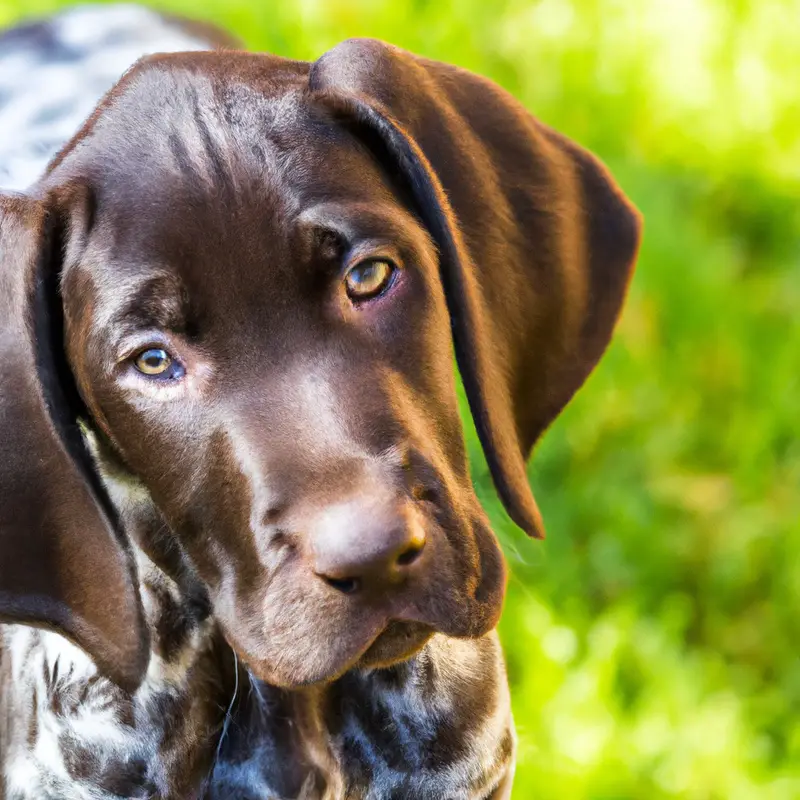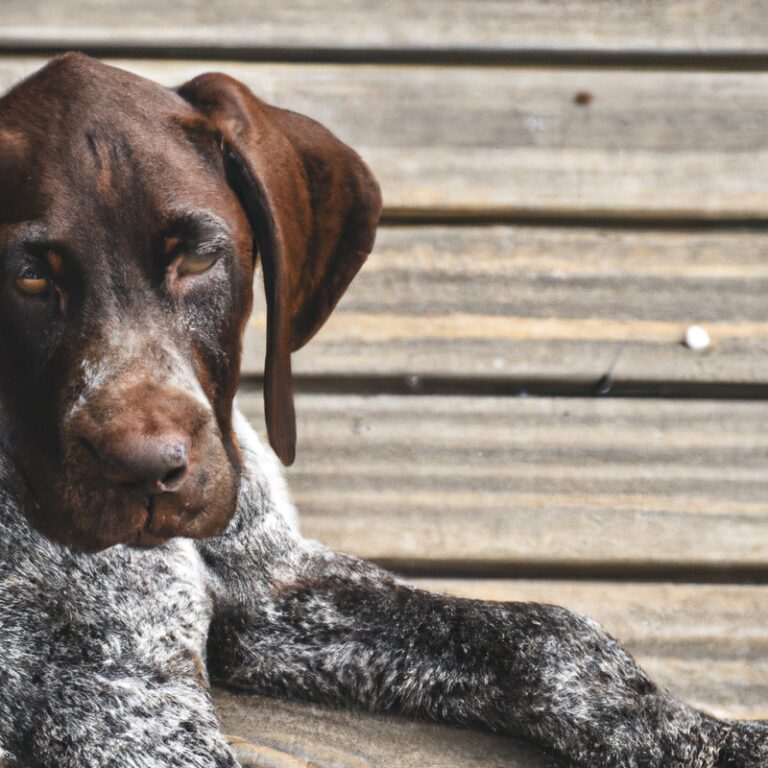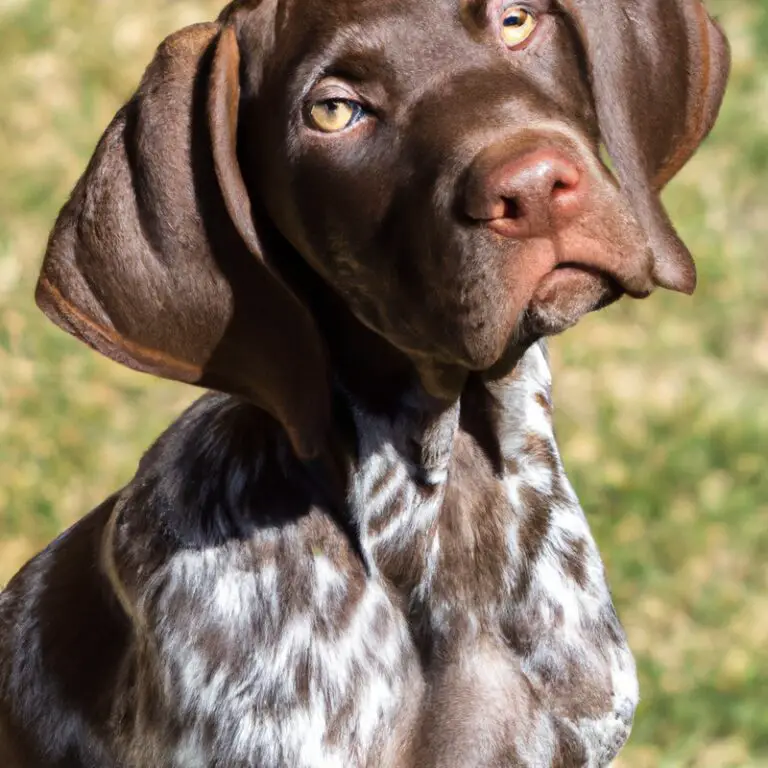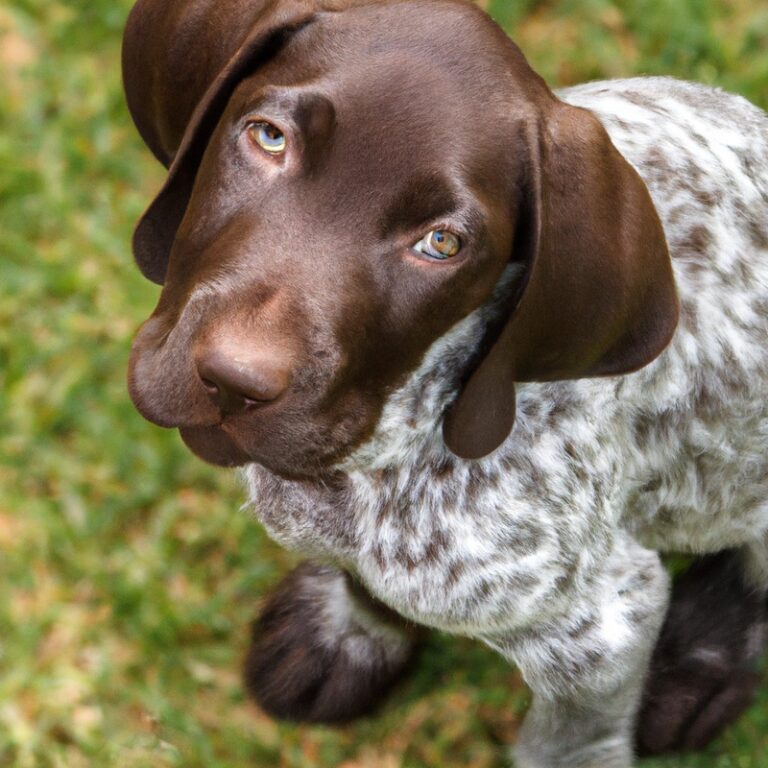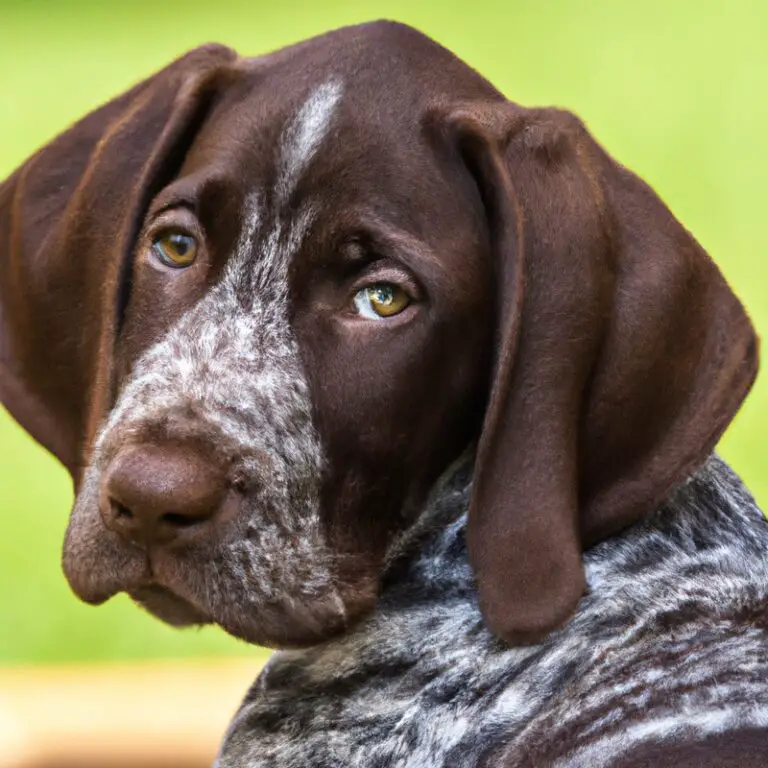How Can I Prevent My German Shorthaired Pointer From Chasing Wildlife?
Key Takeaways:
- Training and socialization at an early age is crucial to preventing a German Shorthaired Pointer from chasing wildlife.
- Providing mental and physical stimulation through activities like obedience training and exercise can help redirect their prey drive.
- Using positive reinforcement techniques and rewards can be an effective way to discourage chasing behavior.
- Consistency and patience are key when working with a German Shorthaired Pointer to prevent them from chasing wildlife.
Are you tired of your German Shorthaired Pointer turning every walk into a wild animal chase? Trust me, I know the struggle.
As a passionate dog owner and trainer, I understand the strong hunting instincts ingrained in these lovable canines.
But fear not! In this article, I’ll share with you effective strategies to prevent your German Shorthaired Pointer from going on a wildlife chase frenzy. From establishing boundaries through training to providing mental stimulation and creating a safe environment, we’ll cover it all.
So let’s jump right in and find the perfect solution for your furry friend!
| Methods | Pros | Cons | |
| 1 | Training and Socialization | Effective long-term solution Easier control off-leash | Requires time and dedication May not be successful for all dogs |
| 2 | Distraction Techniques | Redirects focus away from wildlife Potentially minimize chasing behavior | May require frequent refocusing Does not address underlying behavior |
| 3 | Fencing or Enclosures | Physical barrier prevents chasing Ensures safety of wildlife | Can be expensive Restricts dog’s freedom |
| 4 | Positive Reinforcement | Encourages desired behavior Strengthens bond with dog | Requires consistency and patience Not an immediate fix |
| 5 | Professional Help | Specialized guidance and expertise Customized training plans | Can be costly May still require owner’s involvement |
Understanding the Instincts of a German Shorthaired Pointer
The Hunting Instinct of German Shorthaired Pointers
German Shorthaired Pointers have a strong hunting instinct ingrained in their nature. It is essential to understand this instinct to cater to their needs properly.
They were originally bred as versatile hunting dogs, so chasing and retrieving small game, such as birds, comes naturally to them.
Their keen senses and athleticism make them exceptional hunters. They may display behaviors like pointing, stalking, and chasing wildlife, even if they don’t necessarily intend to harm them.
It’s important to provide them with mental and physical stimulation through activities such as structured play, exercise, and training to channel their energy in a positive way.
Regular training and socialization can help to manage their hunting instincts and ensure their safety in outdoor environments. Always supervise them around wildlife and use positive reinforcement to teach them appropriate behavior.
The Prey Drive of German Shorthaired Pointers
The prey drive of German Shorthaired Pointers is a strong instinct deeply ingrained in their DNA. These dogs were originally bred for hunting, so it’s no surprise that they have a natural urge to chase and capture small animals like birds, rabbits, or squirrels.
Understanding and managing this prey drive is essential for responsible ownership.
It’s important to provide outlets for their energy through regular exercise and mental stimulation. Engaging them in activities like fetch or scent work can help redirect their instincts in a safe and controlled manner.
Training and socialization are also crucial.
Teaching them reliable recall commands and the “leave it” command can help prevent them from chasing wildlife when out and about. Consistency, positive reinforcement, and patience are key when it comes to modifying their behavior.
While it may not be possible to completely eliminate their prey drive, with proper training and guidance, you can help prevent your German Shorthaired Pointer from chasing wildlife and maintain a harmonious relationship with your furry companion.
Establishing Boundaries and Training
Basic Obedience Training for German Shorthaired Pointers
Basic obedience training is essential for German Shorthaired Pointers to prevent them from chasing wildlife. It helps to establish clear communication and control between you and your dog.
Here are some key aspects to focus on during training:
- Start with basic commands: Teach your German Shorthaired Pointer commands like “sit,” “stay,” “come,” and “leave it.” These commands will help you gain control over their chasing instinct and redirect their attention to you.
- Use positive reinforcement: German Shorthaired Pointers respond well to positive reinforcement, such as treats, praise, and rewards. When they obey a command or show good behavior, immediately reward them. This reinforces the desired behavior and encourages them to repeat it.
- Consistency is key: Be consistent in your training approach. Use the same commands and hand signals every time. This helps your dog understand what is expected of them and reduces confusion.
- Start in a controlled environment: Begin training in a controlled environment with few distractions. As your dog becomes more consistent with their obedience, gradually increase the level of distractions to challenge their focus.
- Socialize your dog: Expose your German Shorthaired Pointer to various people, animals, and environments. Proper socialization helps them become more confident and less prone to chasing wildlife out of curiosity or fear.
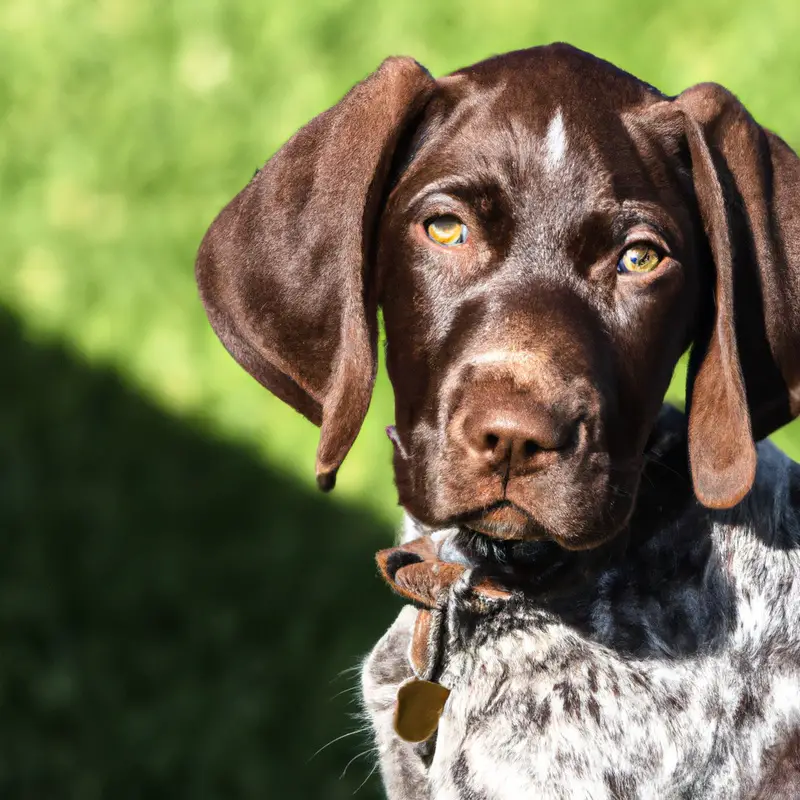
Recall Training to Prevent Chasing Wildlife
Recall training is key to preventing your German Shorthaired Pointer from chasing wildlife. First and foremost, make sure your dog understands and responds to the “come” command reliably.
Practice recall training in a controlled environment, gradually increasing distractions as your dog becomes more proficient.
Use positive reinforcement, such as treats or praise, when they come to you. Regular and consistent training sessions will reinforce the behavior and help your dog resist the temptation to chase wildlife.
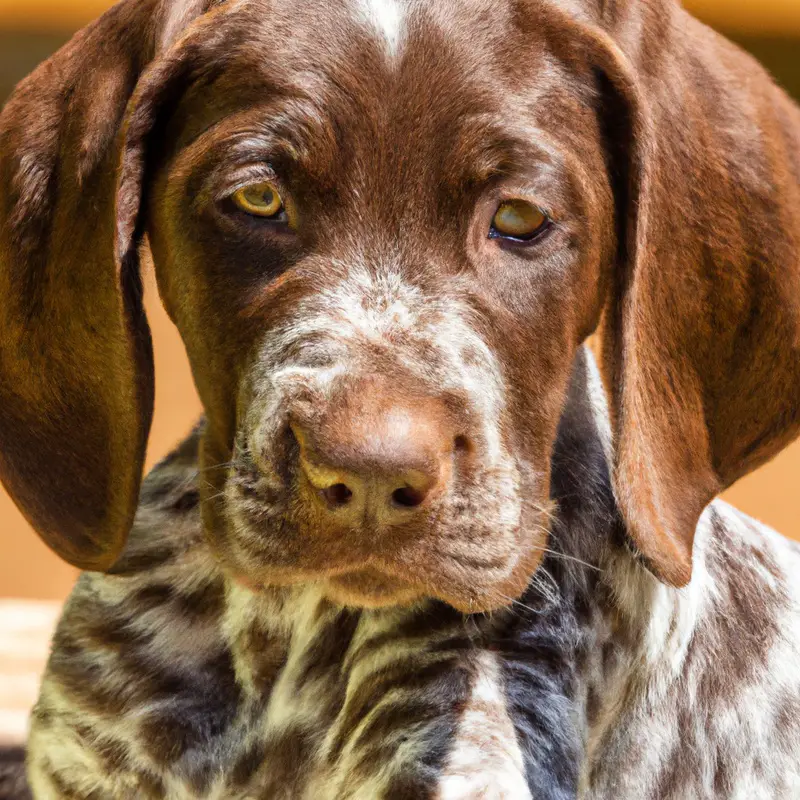
Use of Positive Reinforcement Techniques
Positive reinforcement techniques can be highly effective in preventing your German Shorthaired Pointer from chasing wildlife. Instead of focusing on punishing unwanted behavior, positive reinforcement aims to reward and encourage the desired behavior.
First and foremost, it is important to identify what motivates your dog.
This could be treats, praise, or playtime. Once you know what they find rewarding, you can use these incentives to reinforce good behavior.
For example, if your dog ignores wildlife and comes back to you when called, reward them with a treat or praise.
Consistency is key when using positive reinforcement techniques. Reward your dog every time they exhibit the desired behavior, and gradually reduce the frequency of rewards as they become more reliable.
Also, be patient and understanding with your dog as they learn.
Training sessions should be short, frequent, and enjoyable for both you and your dog. Incorporate obedience commands such as “leave it” or “come” into your training routines, reinforcing them with rewards when your dog follows through.
Consistency and Repetition in Training
Consistency and repetition are key when training your German Shorthaired Pointer to prevent it from chasing wildlife. First and foremost, it’s important to establish clear rules and expectations for your dog.
Be consistent in enforcing these rules every time your dog shows interest in chasing wildlife.
This means not allowing any exceptions or letting your dog get away with inappropriate behavior. Repetition is also crucial in training.
By consistently practicing commands and techniques, your dog will become familiar with what is expected of them and learn to associate certain behaviors with rewards or consequences.
Providing Sufficient Mental Stimulation and Exercise
Engaging Toys and Puzzle Feeders for German Shorthaired Pointers
Engaging toys and puzzle feeders can be a great way to prevent your German Shorthaired Pointer from chasing wildlife. These toys and feeders provide mental stimulation and keep your dog entertained, which helps redirect their energy away from chasing animals.
Here are a few recommendations for engaging toys and puzzle feeders:
- Treat-dispensing toys: These toys are designed to hold treats inside, requiring your dog to figure out how to get to the treats. This keeps them busy and mentally engaged.
- Puzzle feeders: These feeders make mealtime a fun and challenging experience for your dog. They typically require your dog to solve puzzles or manipulate different parts of the feeder to access their food.
- Interactive toys: There are a variety of interactive toys available that require your dog to use their problem-solving skills. Some toys include hidden compartments or buttons that trigger different actions.
Challenging Training Activities to Channel Energy
When it comes to preventing your German Shorthaired Pointer from chasing wildlife, challenging training activities are key to channeling their energy in a positive way. By providing your dog with engaging tasks, you can help them use up their mental and physical energy in a constructive manner.
Here are a few ideas to get you started:
- Agility training: Set up an agility course in your backyard or find a local training center. This will not only provide physical exercise, but also mental stimulation as your dog navigates through jumps, tunnels, and obstacles.
- Nose work: German Shorthaired Pointers have excellent scenting abilities. Engage their nose by playing scent games or introducing them to the sport of tracking. This will challenge them mentally and allow them to use their natural instincts.
- Advanced obedience training: Take your dog’s obedience training to the next level by teaching them advanced commands and tricks. This will keep their mind focused and encourage them to listen and follow your instructions.
- Interactive toys and puzzles: Engage your dog’s mind with interactive toys and puzzles that require problem-solving skills. There are plenty of toys on the market designed to keep dogs entertained and mentally stimulated.

Regular Exercise and Playtime to Reduce Appealing Prey Drive
Regular exercise and playtime are vital in reducing the appealing prey drive of your German Shorthaired Pointer. By providing them with ample physical activity, you can help satisfy their natural hunting instincts in a controlled and safe manner.
A tired dog is often a well-behaved dog, so make sure to engage your pup in daily exercise sessions to prevent them from seeking out wildlife to chase.
Play games like fetch, take long walks, or try out agility training to keep your GSP entertained and mentally stimulated while also reducing their desire to chase and capture prey.
Creating a Safe and Secure Environment
Secure Fencing and Enclosures to Prevent Escapes
When it comes to preventing your German Shorthaired Pointer from chasing wildlife, secure fencing and enclosures are crucial. They provide a physical barrier that keeps your pet safely contained and prevents them from escaping.
First and foremost, make sure your fencing is tall enough to deter jumping and digging.
Reinforce the base of the fence to prevent your dog from digging underneath. Additionally, consider adding a self-closing gate to ensure that it remains securely closed at all times.
By incorporating these measures, you can create a safe and secure environment for your furry friend, while also protecting wildlife.
Supervision and Control in Outdoor Spaces
Supervision and control play a vital role in keeping your German Shorthaired Pointer from chasing wildlife. It’s essential to always keep an eye on your dog while they are in outdoor spaces.
This means not leaving them unsupervised, especially in areas where wildlife is present.
By staying vigilant, you can quickly intervene and redirect your dog’s attention if they start showing interest in chasing animals. Additionally, ensure your dog is always on a leash when outside to maintain better control.
Securing Trash and Garden Areas to Minimize Attractiveness to Wildlife
Securing your trash and garden areas is vital in minimizing the attractiveness to wildlife. First and foremost, make sure your trash cans have secure lids that cannot be easily opened by animals.
This will prevent them from rummaging through the garbage and creating a mess.
Additionally, consider using heavy-duty containers or storing your trash cans in a secure shed or garage, if possible. In terms of your garden, there are a few measures you can take.
Start by removing any fallen fruits or vegetables from the ground, as these can attract wildlife.
Consider using fencing or netting to keep animals out of your garden beds. You can also try planting more native species, as they are often less appealing to wildlife than exotic plants.
Lastly, avoid leaving pet food or bird feeders out overnight, as these can also attract unwanted visitors.
By securing your trash and garden areas, you’ll be taking an important step in preventing your German Shorthaired Pointer from chasing wildlife.
Seeking Professional Help
Consultation with Dog Behaviorists or Trainers
If you’re struggling to prevent your German Shorthaired Pointer from chasing wildlife, consulting with a dog behaviorist or trainer can be a valuable step. These professionals have the knowledge and experience to help you understand why your dog is exhibiting this behavior and provide you with effective strategies to address it.
They can assess your dog’s specific needs and design a training plan tailored to both you and your dog.
With their guidance and support, you’ll be better equipped to prevent your German Shorthaired Pointer from chasing wildlife and keep them safe.
Specialized Training Programs for Prey Drive Management
Specialized training programs can be incredibly helpful in managing and reducing your German Shorthaired Pointer’s prey drive. These programs are designed to specifically address this behavior and provide effective strategies for control.
One common approach is using positive reinforcement techniques to redirect your dog’s attention away from wildlife and towards more appropriate behaviors.
Another technique is desensitization, where your dog gradually becomes accustomed to the presence of wildlife without reacting to them. These programs typically require consistency, patience, and guidance from a professional trainer who specializes in prey drive management.
Alternative Strategies to Deter Wildlife
Use of Noise or Motion-Activated Deterrents
Noise or motion-activated deterrents can be effective tools to prevent your German Shorthaired Pointer from chasing wildlife. These devices work by emitting loud noises or sudden movements that startle your dog and deter them from pursuing their prey drive.
One option is a noise-activated deterrent that produces a loud sound when it detects movement.
This can be helpful in scaring off wildlife and redirecting your dog’s attention. Another choice is a motion-activated device that releases a burst of air or sprays unpleasant scents when triggered by movement.
This sudden and unexpected stimulus can discourage your dog from chasing after animals.
Noise or motion-activated deterrents are relatively easy to set up and can provide continuous protection even when you’re not around. However, it’s important to ensure that these devices are not causing your dog excessive stress or anxiety.
Remember to always consult with a professional trainer or behaviorist to determine the best approach for your German Shorthaired Pointer and to address any underlying behavioral issues.
Natural Repellents and Barriers to Keep Wildlife Away
When it comes to keeping wildlife away from your German Shorthaired Pointer, natural repellents and barriers can be quite effective. First and foremost, you can try using scents that animals find unpleasant, such as citrus peels, cayenne pepper, or vinegar.
Sprinkle these around your yard or garden to deter wildlife from coming near.
Another option is to create physical barriers. This can include installing fences with small gaps or holes that animals can’t squeeze through.
You can also use mesh or netting to cover plants or specific areas where you don’t want wildlife to enter.
Additionally, you can consider using motion-activated devices, such as sprinklers or sound machines, which startle animals and make them think twice about approaching. Remember to regularly maintain and change up the repellents and barriers to keep wildlife on their toes.
By incorporating these natural repellents and barriers, you can create a safer environment for your German Shorthaired Pointer and discourage wildlife from venturing too close.
Consistency and Patience in the Training Process
Recognizing the Importance of Persistence in Training
Let’s talk about the importance of persistence in training your German Shorthaired Pointer. Listen, consistency is key when it comes to any kind of training, especially when it comes to preventing your dog from chasing wildlife.
You have to stay persistent and committed.
Now, don’t get discouraged if progress is slow at first. Dogs, like humans, learn at their own pace.
So, be patient and keep training.
It might take some time for your furry friend to fully understand and obey your commands.
Celebrating Small Achievements in Preventing Wildlife Chasing
One of the key aspects of preventing your German Shorthaired Pointer from chasing wildlife is to celebrate the small achievements along the way. Instead of expecting immediate perfection, it’s important to acknowledge and praise your dog for any progress they make in curbing their chasing instincts.
For example, if your dog shows restraint by not going after a squirrel during a training session, give them lots of praise and rewards.
This positive reinforcement helps your dog associate good behavior with positive outcomes. It also builds their confidence and motivation to continue improving.
Final Verdict
Understanding and managing the instincts of your German Shorthaired Pointer is crucial in preventing them from chasing wildlife. By establishing boundaries through basic obedience training and recall training, using positive reinforcement techniques, providing mental stimulation and exercise, creating a safe environment, seeking professional help, and implementing alternative strategies to deter wildlife, you can effectively manage your dog’s prey drive.
Remember, consistency and patience are key in the training process.
With dedication and perseverance, you can create a harmonious environment that ensures the safety of both your dog and wildlife. Trust the expertise and advice presented here, and embark on this journey with confidence.

